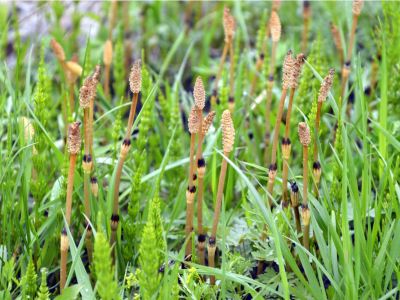What are Horsetail Weeds?
The horsetail weed family (Equisetum spp.), closely related to the fern family, contains over 30 ancient species of plants. At one time, horsetail was the dominant plant on the earth and was said to have grown to a very large size. Today, there are two forms of this perennial plant. One is known as “scouring rush,” and has no leaves but instead has hollow and jointed stems. At one point in time, this plant was not considered obnoxious and was actually used extensively. Early settlers used the stems of this horsetail plant to clean pots and pans. English cabinetmakers used the stems to polish wood. The second type of horsetail plant has many slender, green, jointed branches around jointed and hollow stems. Its appearance resembles a horse’s tail and is sometimes called a “mare’s tail.” This horsetail was also used by ancient civilizations to stop bleeding and heal wounds. Horsetail is a perennial, flowerless weed that can be very toxic to animals, especially horses, if eaten in large amounts. Horsetail spreads by spores that are carried by the wind. Horsetail can be found in ditches, around ponds, along roadsides, in fields, and sometimes even in the garden.
How to Get Rid of Horsetail
Although horsetail is commonly found in ditches, along roads, by ponds, or even in fields, it can also find its way to your garden area. Getting rid of horsetail weed in gardens and other areas of the landscape is no easy task. Horsetail weed in gardens can be a major problem because this plant has a tremendous root system with rhizomes. There is no specific horsetail weed killer and many chemical options are just not very effective. In small areas, it may be possible to dig the plant up by the roots. It is imperative that all roots are removed, or the weed will reappear. Another option for control involves smothering the plant with a large sheet of plastic. Leave the plastic on for at least one garden season. The weeds under the plastic should die. The best method to keep this weed from taking over your garden is to practice prevention. Improve areas in your landscape that don’t drain well and keep tilling around horsetail to a minimal, as this will only spread the spores.
